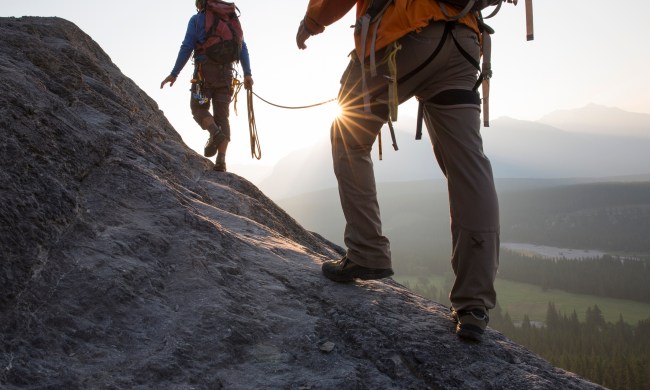When wintertime comes around, most people put away their camping gear and spend their time bundled up indoors. But if you’re one of the adventurous few, you’ll know that winter time is the best time to experience the magic of our treasured outdoor locales. Snowcapped mountains, powdered trees, and the wildlife rival anything you might see in summer, but in order to enjoy it, you need to know how to stay warm outside. In my experience, staying warm is the key to your wintertime enjoyment. Those who follow these tips are sure to stay out longer than ever.
Look at your layering system

Let’s start at square one: your layering system. The layering system includes three layers. First, your base layer the closest to your skin. These will be your under shirts and thermalwear. To avoid chills, avoid cotton at all costs, and choose merino wool or moisture-wicking synthetic fibers to draw any moisture away from the skin. These should be close-fitting but comfortable.
The middle layer is called the insulating layer. This is normally made of fleece, down, or synthetic insulation that traps body heat to create a warm barrier. This barrier will allow the moisture wicked from layer one to evaporate, keeping you drier. For this layer to be most effective, make sure that it fits well. If there is too much space down your armholes or around your waist, cold air could seep in and ruin the effect.
The last layer will be your waterproofing or wind-proofing shell. Gore-Tex is a great middle-ground for this because it shields you from the elements while still allowing moisture from escaping. Hardshell jackets and snow pants are great examples of outer shells. This should fit overtop your other layers comfortably and allow for a decent range of movement.
Don’t neglect your head, hands, or feet

As someone who has grown up where it snows, I often heard the myth that people lose 40-50% of their body heat through their head. But the fact is, a 2008 study proved that a healthy adult only loses about 10% of their body heat through their head. That’s still quite a bit, so it doesn’t hurt to cap up. Use insulated hats or beanies, but for full face coverage, try balaclavas, ski masks, or goggles. To keep your neck toasty, pair your hat with a scarf, neck gaiter, or buff.
A good pair of insulated gloves or mittens will do wonders, but make sure that they have waterproof outer layers. One of my best tips for how to stay warm outside is to try not to take off your gloves. Once that heat leaves, it’s so hard to get it back. But for additional warmth and moisture control, try using a glove liner.
Your feet should have the same careful consideration as your layering system. Thermal or merino wool socks are just the thing, but you can also try double-layering your socks for extreme conditions. Pick boots with insulation and good traction to avoid slipping.
Nutrition and hydration

One of the most annoying parts about getting all dressed up in your snow gear is having to pee. But don’t make the mistake of holding off on the water. Hydration is so important during the winter time, drink small sips regularly. To keep your water from freezing, try using an insulated water bottle. Thermoses are also a great way to bring along a toasty drink but stay away from alcohol or anything with caffeine because it will cause dehydration.
In terms of food, make sure that they are calorie-dense. Trekking through snow will cause you to burn a lot of energy, so pack snacks like nuts, chocolate, energy bars, or trail mix. If you’re planning to be out beyond mealtime, pack a chili or stew in a thermos or try one of our winter camping recipes.
Be aware of conditions and stay safe

Before you go out, stay informed about weather and other conditions that might affect the safety and comfort of your outdoor activities. While the winter landscape is some of the most beautiful in the world, there are some dangers to keep aware of so you know when to turn around. Always have a backup plan or two around, and always tell a friend or loved one where you’re going to be and for how long. Weather can often change at the flip of a switch, so prepare in advance.
When your adventures bring you to a snowy or mountainous area, be sure to check the avalanche forecasts for your area and carry safety equipment like a beacon, probe, and shovel, and stay far away from avalanche-prone terrain such as steep slopes where recent snow has fallen. Don’t walk on ice unless you can be certain that it’s at least 4 inches thick, and be prepared for low visibility like fog, snowstorms, or whiteouts. Always bring a map, compass, or GPS to navigate in case you lose your way.
If you start feeling numbness, tingling, shivering, or fatigue, it’s time to call it quits. Listen to your gut to avoid winter dangers such as hypothermia and frostbite.




